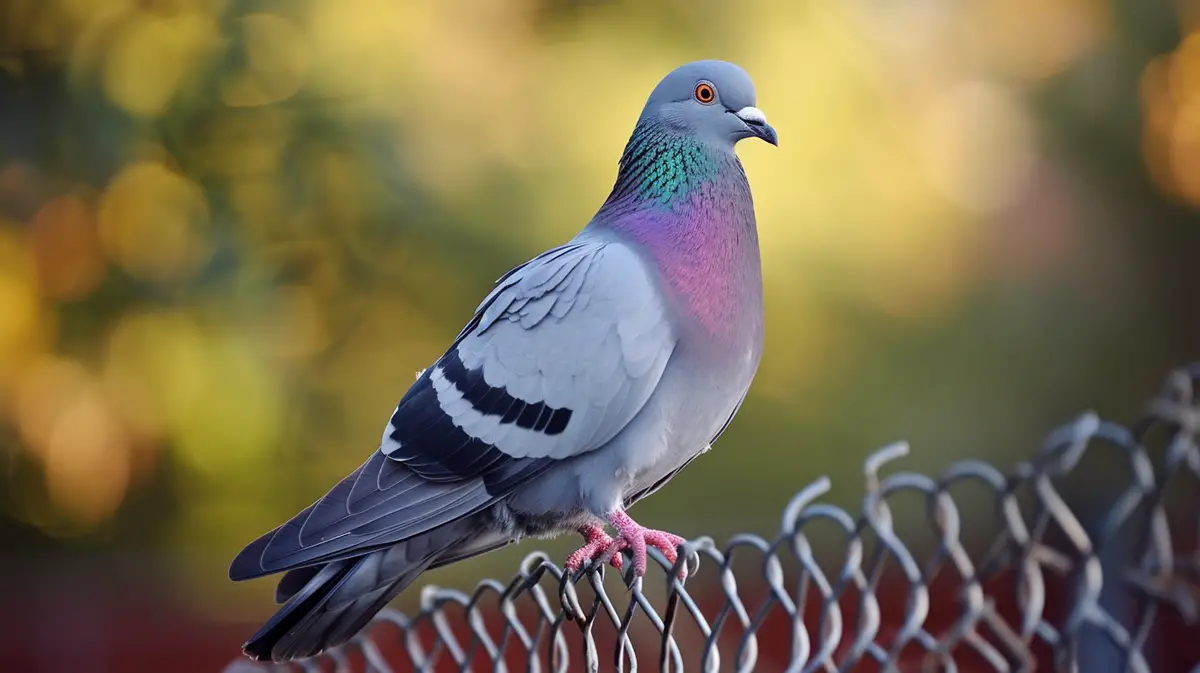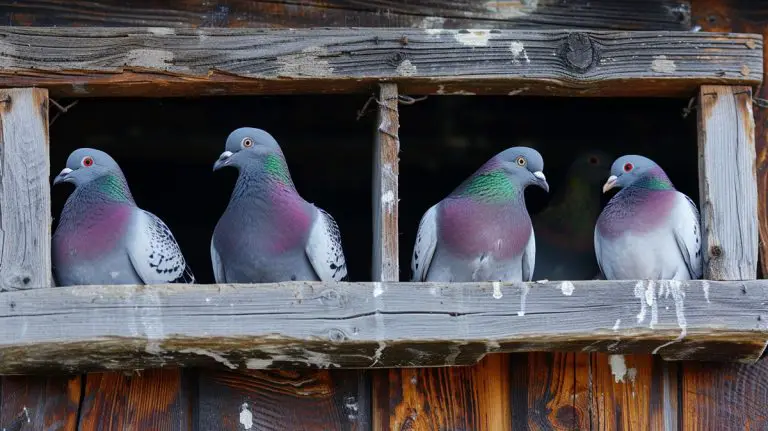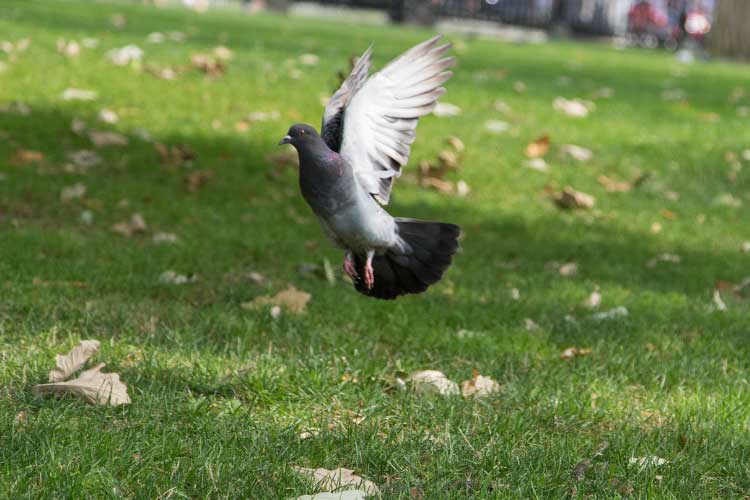Sudden Pigeon Deaths: Causes and Prevention
Have you ever come across a group of pigeons lying lifeless on the ground, with no apparent cause for their sudden demise? It’s a baffling sight that has left many people puzzled and concerned. As an experienced blogger, I’ve delved into this mysterious phenomenon to shed some light on why pigeons might be dying suddenly and what could be behind this alarming occurrence. In this article, I’ll explore the possible reasons for these sudden pigeon deaths and provide some insights into what we can do to prevent further losses. So, let’s dive in and uncover the truth behind this perplexing mystery.
Possible Causes of Sudden Pigeon Deaths
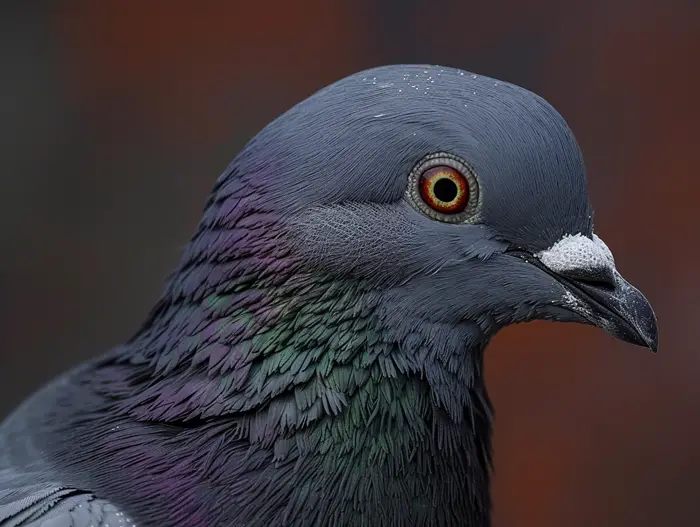
Pigeons are known for their ability to adapt and survive in urban environments. However, there have been instances where these resilient birds die suddenly, without any apparent cause. This phenomenon has left people puzzled and looking for answers. In this section, I’ll explore some possible causes of these sudden pigeon deaths.
- Disease Outbreaks: Diseases can spread rapidly among pigeon populations, leading to mass die-offs. Avian paramyxovirus and avian influenza are two common diseases that affect pigeons and can cause sudden deaths. These diseases can be transmitted through direct contact with infected birds or contaminated food and water sources.
- Toxicity: Toxic substances present in the environment can be harmful to pigeons. Pigeons may inadvertently consume toxic chemicals, such as pesticides or pollutants, from contaminated food sources or water. These substances can have a detrimental impact on their health, leading to sudden deaths.
- Environmental Factors: Extreme weather conditions can also contribute to the sudden deaths of pigeons. Prolonged exposure to extreme cold or heat can weaken their immune system and make them more susceptible to illness and death. Additionally, severe storms or hail can cause fatal injuries to pigeons.
- Predation: Pigeons are prey for many predators, including birds of prey, cats, and snakes. If the predator population is high in a particular area, it can result in increased predation on pigeons, leading to sudden deaths.
- Lack of Food and Water: In urban areas, scarcity of food and water can pose a significant threat to pigeons’ survival. When these resources become scarce, pigeons may struggle to find enough nourishment, leading to malnutrition and eventually, sudden deaths.
- Stress and Overcrowding: Pigeons are highly social birds, but overcrowding in their roosting and nesting areas can cause stress and competition for resources. This can lead to weakened immune systems and higher susceptibility to diseases, resulting in sudden deaths.
It’s essential to investigate and address these possible causes to prevent further losses and preserve the pigeon population. By identifying the root causes of these sudden deaths and implementing appropriate measures, we can create a safer environment for these remarkable birds.
Avian Diseases and Infections
When it comes to the sudden deaths of pigeons, one possible factor to consider is the presence of avian diseases and infections. Birds, including pigeons, can be susceptible to various diseases caused by viruses, bacteria, and other pathogens. These diseases can have severe consequences and lead to mass mortality events.
As an avian expert, I’ve studied the impact of diseases on bird populations extensively. Avian diseases and infections can spread rapidly within a pigeon population, especially in situations where there is increased stress or overcrowding. This can result in the sudden and significant loss of pigeons.
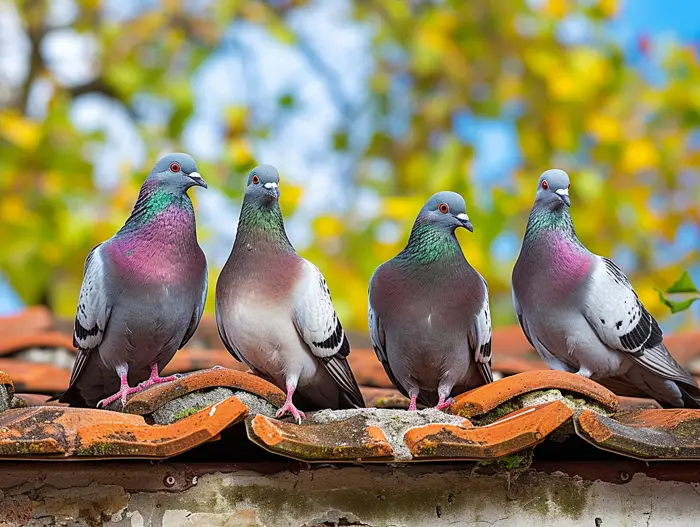
There are several common avian diseases that can affect pigeons:
- Avian influenza (AI): This highly contagious respiratory disease can cause severe illness in pigeons. AI can spread quickly through bird-to-bird contact and contaminated environments.
- Newcastle disease: Also known as avian paramyxovirus, this viral disease affects a wide range of bird species, including pigeons. Newcastle disease can cause respiratory distress, nervous system problems, and high mortality rates.
- Pigeon pox: This viral disease is characterized by the appearance of wart-like growths on the skin, beak, and feet of infected pigeons. Pigeon pox can lead to discomfort, difficulty in feeding, and secondary infections.
To prevent the spread of avian diseases, it is crucial to implement proper biosecurity measures. This includes keeping pigeon enclosures clean, quarantining new birds before introducing them to the existing population, and regular monitoring for any signs of illness. Vaccinations can also be a preventative measure against specific diseases.
Avian diseases and infections can contribute to the sudden deaths of pigeons. Understanding the potential impact of these diseases and implementing appropriate measures for prevention and control is essential to protect pigeon populations. By being aware of the risks and taking proactive steps, we can help safeguard the well-being of these birds.
Environmental Factors
One of the factors that can contribute to the sudden deaths of pigeons is the environment in which they live. Various environmental factors can impact the health and well-being of pigeons, potentially leading to mass mortality events. Let’s explore some key factors:
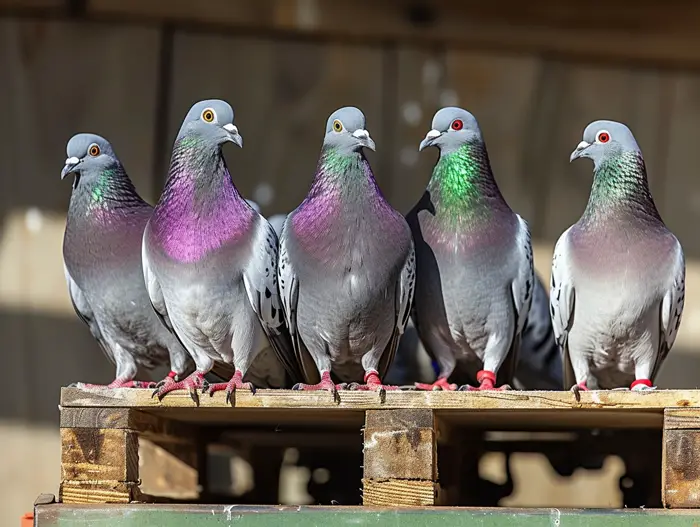
1. Weather Conditions
Extreme weather conditions can have a significant impact on pigeons. For example, extreme heat or cold can be detrimental to their health. Pigeons are better equipped to handle cold weather, but in severe cases, they may struggle to find enough food and water, leading to weakness and vulnerability to diseases.
Heavy rain and strong winds can also pose a threat. Pigeons rely on their feathers for insulation and protection, but excessive rain can soak their feathers, rendering them unable to regulate their body temperature properly. Additionally, high winds can make it difficult for pigeons to fly and seek shelter, making them more susceptible to injuries and illnesses.
2. Pollution and Contaminants
The presence of pollutants and contaminants in the environment can have adverse effects on pigeons. Air pollution, for instance, can lead to respiratory problems and weaken pigeons’ immune systems, making them more susceptible to infections and diseases.
Water contamination is another concern. Pigeons need access to clean water for drinking and bathing. If the available water sources are contaminated with chemicals or harmful substances, it can negatively impact their overall health and well-being.
3. Habitat Loss and Urbanization
Habitat loss and urbanization can significantly impact pigeon populations. As urban areas expand and natural habitats are destroyed, pigeons may face challenges in finding suitable nesting sites and adequate food sources. They may be forced to compete with other bird species for limited resources, leading to increased stress and vulnerability to diseases.
Furthermore, urban environments can expose pigeons to hazards, such as vehicular traffic and human structures. Collisions with vehicles or buildings can result in fatal injuries, contributing to sudden pigeon deaths.
4. Food Availability
A lack of food availability can also be a significant factor in pigeon mortality. Pigeons primarily feed on seeds, grains, and scraps of food. If their usual food sources become scarce, they may have to resort to eating contaminated or unhealthy food, which can negatively impact their health and increase the risk of diseases.
Contaminated Food and Water Sources
When it comes to the sudden deaths of pigeons, one important factor to consider is the contamination of food and water sources. These contaminants can have a significant impact on the health and well-being of these birds.

1. Pesticides and Chemicals
Pigeons often feed on crops, plants, and grains that may be treated with pesticides or other chemicals. These substances can contaminate the food sources of pigeons, leading to harmful effects on their bodies. Pesticides can disrupt the bird’s nervous system, affect their digestive system, and weaken their immune system, making them more susceptible to diseases.
2. Polluted Water
Pigeons rely on water sources for drinking and bathing. If these water sources are polluted, it can have detrimental effects on their health. Polluted water can contain harmful substances such as heavy metals, chemicals, or pathogens that can be ingested by the birds. This can lead to gastrointestinal issues, organ damage, and increased vulnerability to diseases.
3. Contaminated Feeding Areas
Pigeons often congregate in urban areas where there can be a higher risk of contamination. City environments are filled with pollutants such as exhaust fumes, industrial waste, and other contaminants. These substances can settle on surfaces where pigeons feed, contaminating the food they consume. Toxic substances in the environment can accumulate in their bodies over time, leading to adverse health effects.
4. Disease Transmission
Contaminated food and water sources can also play a role in disease transmission among pigeon populations. Pathogens and bacteria can thrive in these contaminated environments, infecting the birds and causing various diseases. These diseases can spread rapidly through the pigeon community, leading to mass mortalities.
It is crucial to recognize the significance of contaminated food and water sources when investigating sudden pigeon deaths. Addressing these sources of contamination is crucial for the health and well-being of these birds.
Remember to always prioritize the safety and cleanliness of the food and water sources available to pigeons in your area. By doing so, we can help protect their populations and prevent the spread of diseases.
Let’s now move on to discussing another important factor contributing to sudden pigeon deaths – habitat loss and urbanization.
Predators and Natural Threats
When it comes to the sudden deaths of pigeons, it’s essential to consider the role of predators and natural threats in their population dynamics. While pigeons might seem like peaceful birds, they face several challenges in their daily lives. In this section, I’ll delve into the predators and natural threats that can contribute to the sudden deaths of pigeons.
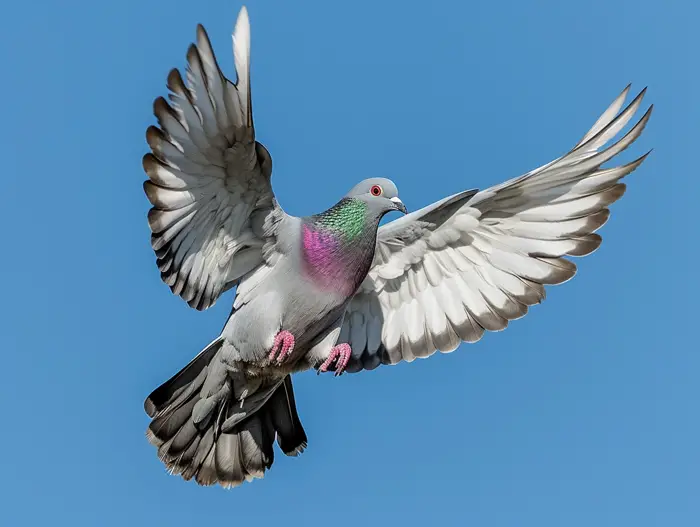
Predators
Pigeons encounter various predators in their environment, and these encounters can sometimes be fatal. Some common predators of pigeons include:
- Birds of prey: Raptors such as hawks, falcons, and eagles are skilled hunters and pose a significant threat to pigeons. With their keen eyesight and powerful talons, birds of prey can quickly capture unsuspecting pigeons.
- Domestic pets: Cats are natural hunters and can prey on pigeons, especially if they have access to urban areas where pigeons often inhabit. Dogs, although less likely to catch pigeons, can still disrupt their nests and cause stress.
- Snakes: Certain species of snakes, like the rat snake and the black racer, are known to prey on pigeons and their eggs. These silent slitherers can catch pigeons off guard and have a devastating impact on their populations.
Natural Threats
Apart from predators, pigeons also face natural threats that can impact their survival. These threats include:
- Severe weather: Extreme weather conditions, such as strong winds, heavy rain, or severe storms, can cause injury or even death to pigeons. They may struggle to find shelter and become vulnerable to accidents or exposure.
- Disease and parasites: Pigeons can fall victim to various diseases and parasites, which can weaken their immune systems and lead to fatalities. Common diseases include avian pox, Newcastle disease, and pigeon canker.
- Lack of food and water: Pigeons rely on food sources like grains, seeds, and insects, as well as access to clean water. If these resources become scarce or contaminated, pigeons may suffer from malnutrition, dehydration, and weakened health.
By understanding the threats that pigeons face from predators and natural factors, we gain a broader perspective on sudden pigeon deaths. It’s important to consider these factors when working on conservation efforts and implementing measures to protect pigeon populations.
Remember, a combination of factors contributes to the sudden deaths of pigeons, and addressing these threats holistically is crucial for their survival.
Conclusion
The sudden deaths of pigeons can be attributed to various factors, including contaminated food and water sources as well as predators and natural threats. Pesticides and chemicals in crops can contaminate their food, affecting their overall health and immune systems. Polluted water can also have detrimental effects, leading to organ damage and increased vulnerability to diseases. Additionally, contaminated feeding areas in urban environments can expose pigeons to pollutants, which can accumulate in their bodies over time. These contaminated sources not only impact individual pigeons but can also contribute to the transmission of diseases among pigeon populations, resulting in mass mortalities.
Furthermore, predators such as birds of prey, domestic pets, and snakes pose a significant threat to pigeon populations. Severe weather, diseases, and lack of food and water also play a role in the sudden deaths of pigeons. Understanding these threats is crucial for conserving pigeon populations and implementing effective measures to protect them.
To safeguard pigeon populations and prevent the spread of diseases, it is essential to address the sources of contamination, promote responsible pesticide use, and create safe and clean feeding areas. Conservation efforts should also focus on managing predator populations and providing suitable habitats for pigeons. By taking these steps, we can ensure the long-term survival and well-being of these remarkable birds.
